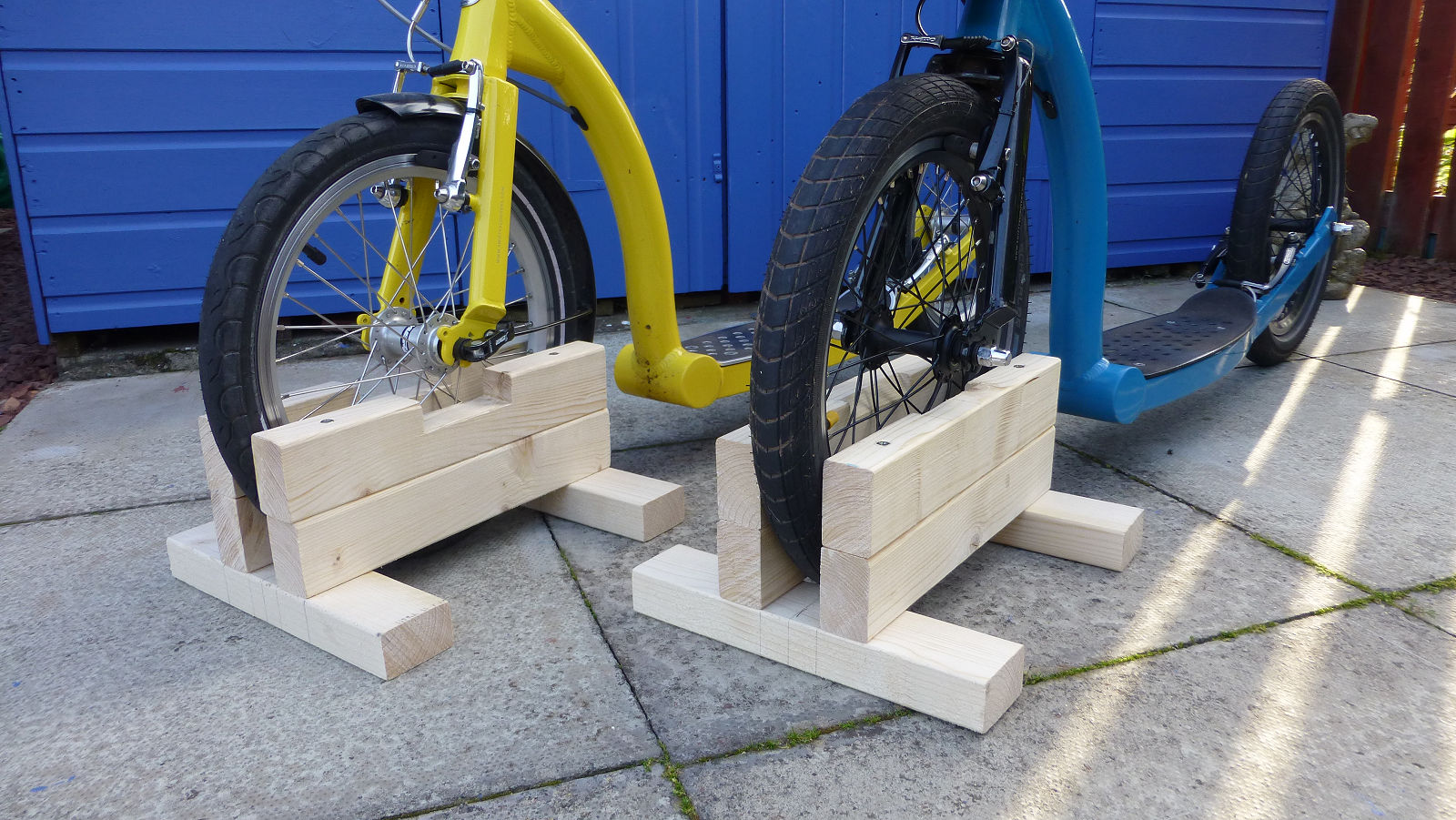Kick scooters, as well as bicycles and motorcycles, are strange contraptions that are only stable when moving forward, simply falling over when stationary, unless propped up by some means of another. I have no idea how the physics of this works and I’m not even going to try. This in-build desire for kick scooters to fall over was beginning to annoy me. I’d lost count of the number of times they take it upon themselves to suddenly fall over when no-one is looking. You leave them apparently securely upright, turn your back, and away they go. Something had to be done.
A quick look on the Swifty Scooters website and hats off to them. They offer a choice of floor stands, £39.00 for the plywood one and £59.00 for the metal version. Yes, they look really super-awsome but £40.00 for a few bits of plywood – and I needed two of them, one for each scooter. Yes, I could have bought them but I’m a bloke with a Man Cave and I tinker with things. It would be an insult to Man-Cave owners throughout the universe not to see what I could fabricate from scrap.
A floor stand for a scooter is not a complex affair, all that is required is some means of supporting the wheel from the sides and something to prevent the whole thing falling sideways, namely some lateral supports or outriggers. An idea quickly formed in my mind and a quick rummage in the shed came up with the goods, some lengths of 65 x 38 CLS timber and some 45 x 45 mm dressed softwood, all left-over offcuts from a previous project, in this case a bench for my wife’s potting shed. I also had a box of screws that provided the quantity and lengths required.
It was really a case of making up the design as I went along. I reckoned that 300 mm would be enough length for the outriggers, using the 45 x 45 mm dressed softwood for this, although a smaller size would also be okay. I used the 65 x 38 mm CLS to support the wheels, cutting two 350 mm lengths. Everything was then drilled and screwed from the underside to create the floor stand shown above. It was a bit trial and error getting a snug fit to support the wheel, even a single millimeter too much or too little, makes all the difference. Two were made, one for the Swifty Zero with its skinnier tyres and another for the Swifty Air with its larger tyres.
Overall cost was zero, as I had all the materials in the Man Cave, all left over from previous projects. If you bought 2 x 2400 mm lengths of 65 x 38 mm CLS timber at the local DIY store, it would cost around £6.00, add another £3.00 for the screws. This would be enough for two stands, half that for only one. The floor stands can also be used to support the scooter for maintenance and cleaning. A final point, if you don’t want to use timber, you could also fabricate something very similar using plumbing waste or overflow pipe, using a mix of straight pipe, bends and tees. Have fun!
Update. On a trip to the local DIY store, I grabbed a couple of 2.40m lengths of the 65 x 38 mm CLS timber mentioned above and had another go at the floor stands, only this time adding two horizontal supports to add some additional height and support. A small cut out or chamfer was required to give clearance for the spokes near the hub and the result was much neater and stable floor stands, one for the Swifty Air and another for the Swifty Zero. The previous stands were dismantled and the screws re-used.
Copyright ©2020 Gary Buckham. All rights reserved.


